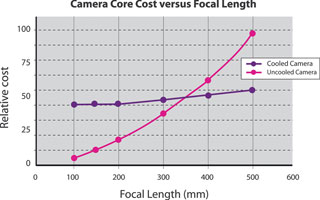

With the use of thermal cameras along borders, in total darkness and adverse weather conditions, as used currently, the only means of detecting small amounts of heat at distances of 16 km will be by using cooled detectors.
Sometimes, questions like, when do I have to use cooled and when do I use uncooled detectors, is asked when a solution is engineered.
There are many products on the market but there are mainly two types of detectors available within the thermal range of products - cooled detectors, used in long-range cameras, and uncooled detectors, used in medium- to short-range products. Cost will be a major choice in deciding which technology to use and bearing in mind that the security market is very sensitive to cost.
Cooled detectors
Modern cooled thermal imaging cameras have an imaging sensor, which is integrated with a cryocooler and this device will cool down the sensor temperature to cryogenic temperatures. This reduced temperature is very important to reduce thermally induced noise to a level lower than that of the signal, from the scene being imaged.
The coolers have moving parts and the tolerances of the mechanical parts is very critical and it wears out over time, and the helium gas works its way past the seals within the unit. The implications thereof are that the coolers have to be rebuilt every 8000 to 10 000 hours of operation.
This type of camera is the most sensitive type of camera available today, especially when small 'temperature targets' are observed over very long distances. Cooled detectors operate within the midwave infrared region, 3-5 μm range, within the electromagnetic spectrum.

Uncooled detectors
Uncooled infrared cameras are ones in which the detector does not require cryogenic cooling. One of the common designs is based on the microbolometer. This comprises of a tiny vanadium oxide resistor with a large temperature coefficient on a silicon element with a large surface area, low heat capacity and good thermal isolation.
Changes in the temperature of a scene cause changes in the bolometer temperature, which are converted to electrical signals.
Uncooled detectors operate within the long wave infrared region, 7-12 μm range, within the electromagnetic spectrum. This is the area where most of the terrestrial temperature targets emit most of their infrared energy.
This type of camera is generally much less expensive than the cooled type camera. These cameras do not have moving parts and can work for years on end.
Conclusion
One of the cost effective factors to consider is that cooled systems will be best to use beyond detection ranges of more than 5 km. Another major contributing factor is the price of the lens of the complete system.
For more information contact Timeless Technologies, 0861 846 383, [email protected], www.timetech.co.za
Acknowledgement to Flir - Technical Notes.

© Technews Publishing (Pty) Ltd. | All Rights Reserved.